How to Teach Rounding Off Numbers to Kids: Making Math Fun and Engaging!
If you’ve ever tried to explain the concept of rounding off numbers to a child, you know it can sometimes feel like trying to explain why the sky is blue or why they can’t have ice cream for breakfast every day. But fear not, fellow parents and teachers! With the right approach, teaching rounding off can be as fun as a game of hide and seek (well, almost!). Let's dive into the world of rounding off numbers with engaging activities, a touch of humor, and a whole lot of fun.
Why Teach Rounding Off?
First things first, why is rounding off numbers important? It’s a vital skill that helps children simplify complex calculations, estimate sums quickly, and understand the importance of place value. Plus, it’s a part of the Common Core Standards:
(CCSS.Math.Content.4.NBT.A.3), so it’s a must-learn!
Understanding the Basics
Before we jump into the activities, let’s break down the basics. Rounding off is all about finding the closest number to a given number, based on a specific place value. Here’s a quick refresher:
- Identify the rounding digit: This is the place value to which you want to round off.
- Look at the digit to the right: This helps decide whether to round up or stay the same.
- Apply the rule:
- If the digit is 5 or higher, round up.
- If the digit is 4 or lower, keep the rounding digit the same.
Now that we’ve got that covered, let’s move on to some fun ways to teach rounding off numbers!
Fun and Engaging Activities
Rounding Off Numbers Chart Start with a visual aid. Create a rounding off numbers chart that shows different place values and examples of rounding. This can be a colorful poster in the classroom or a printable sheet for home use.
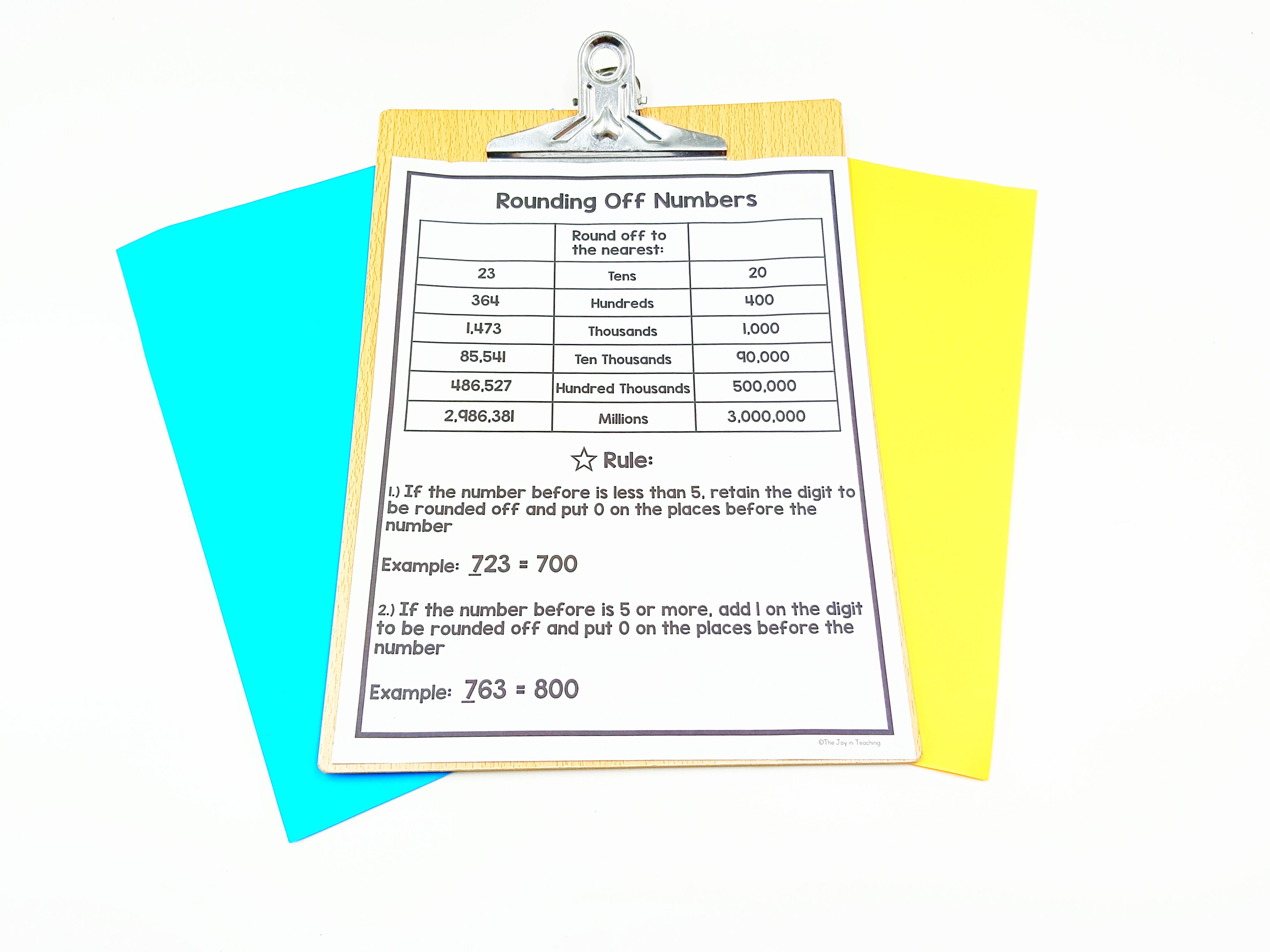
Tens
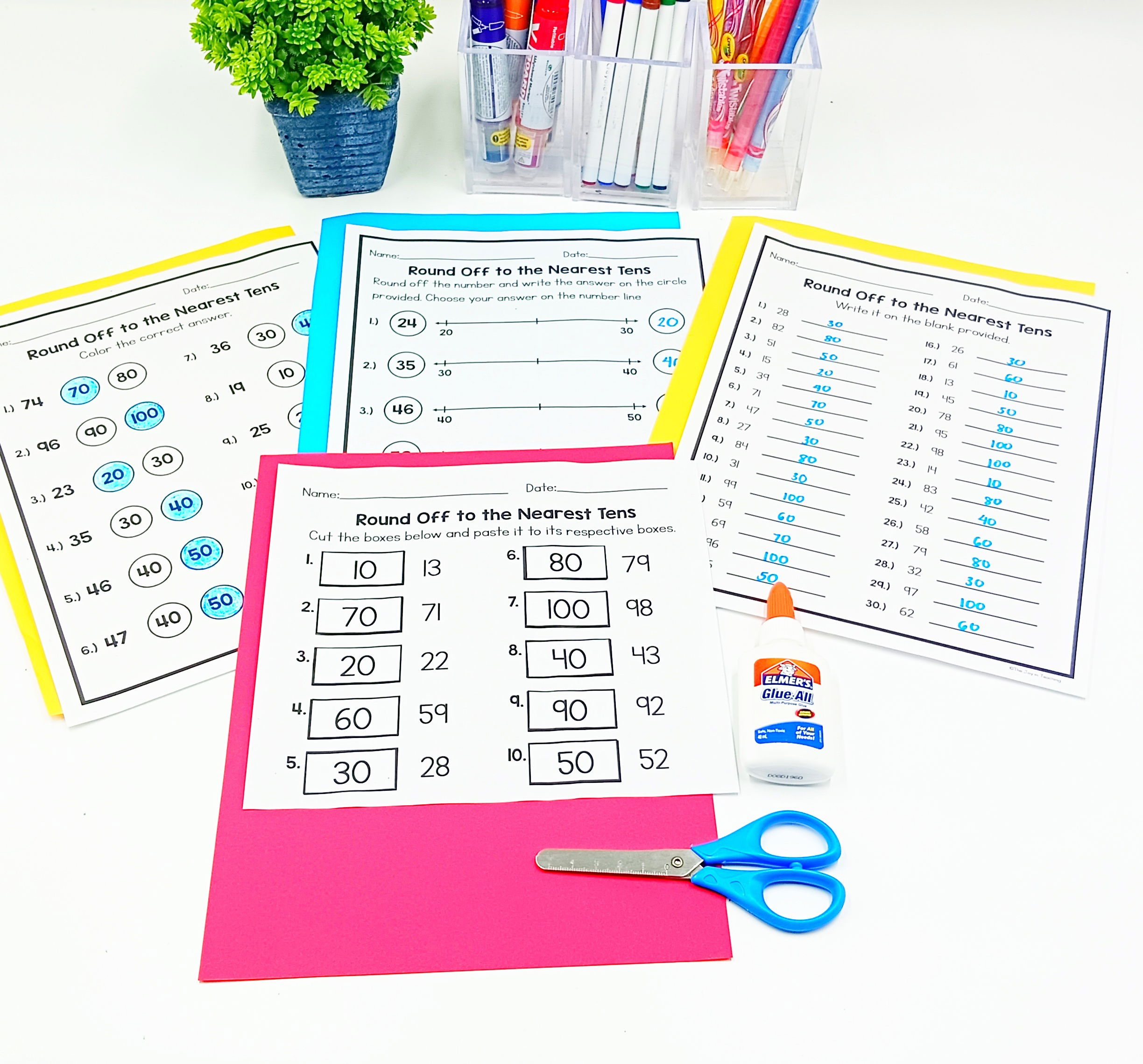
Hundreds
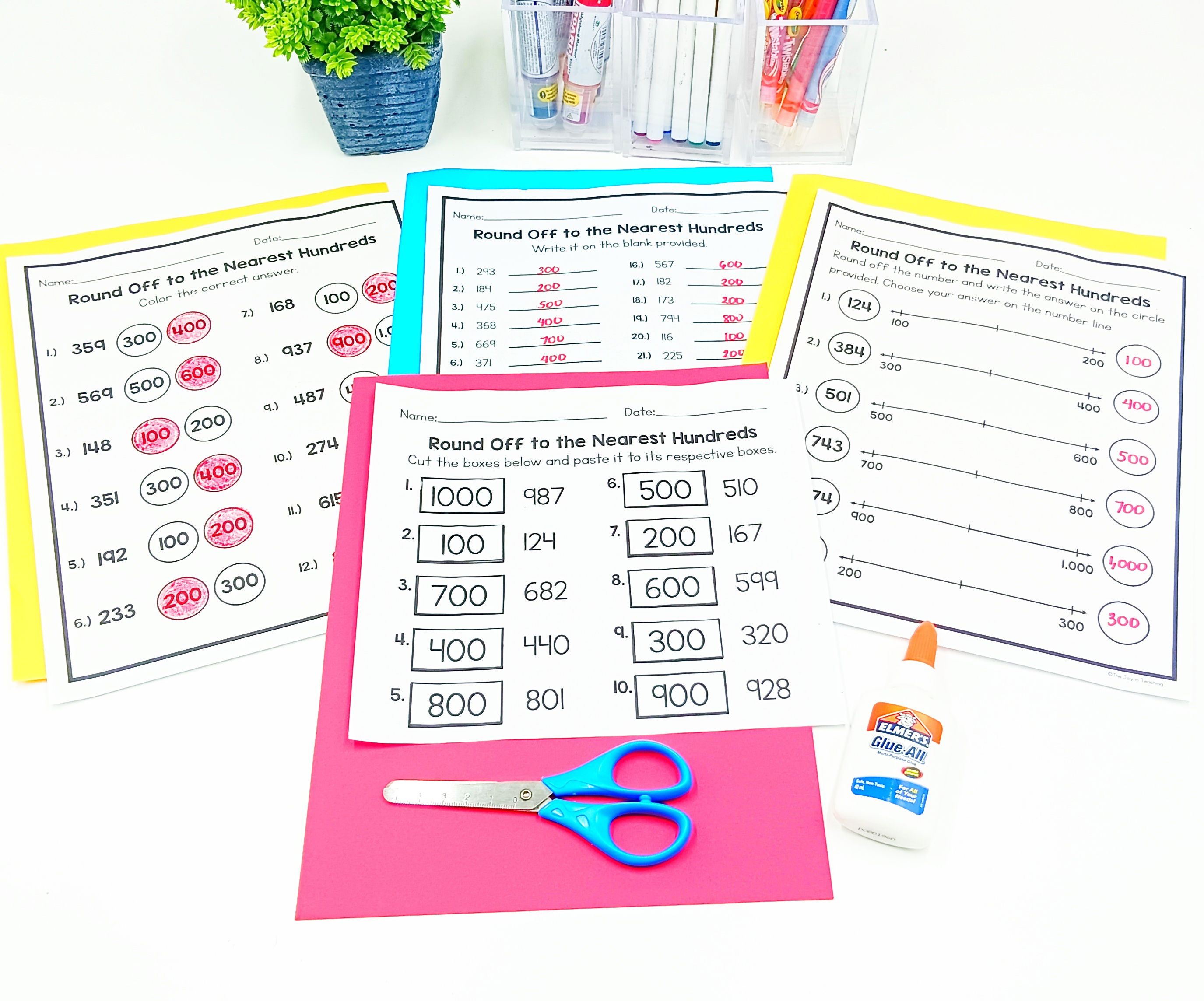
Thousands
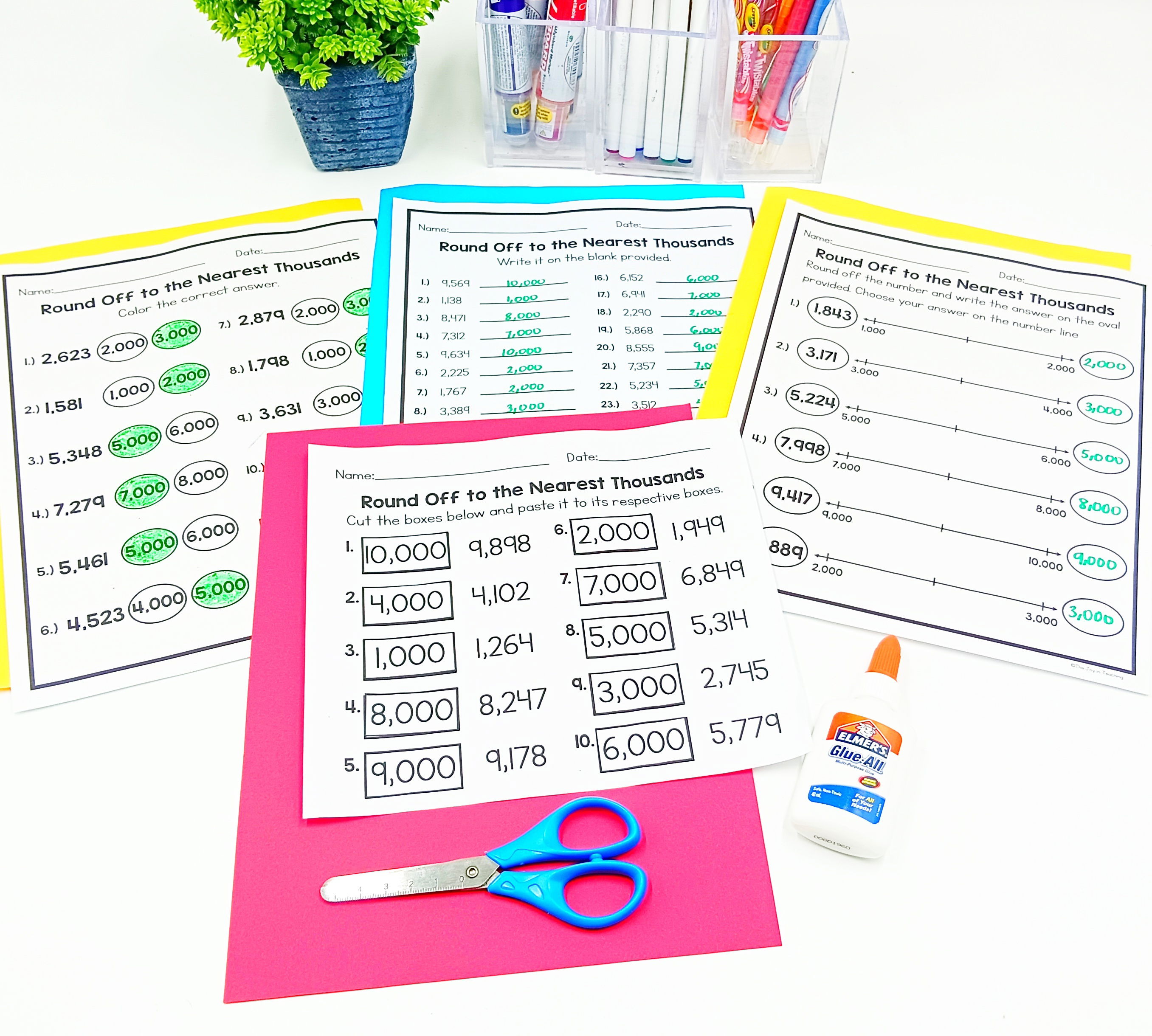
Ten Thousand:
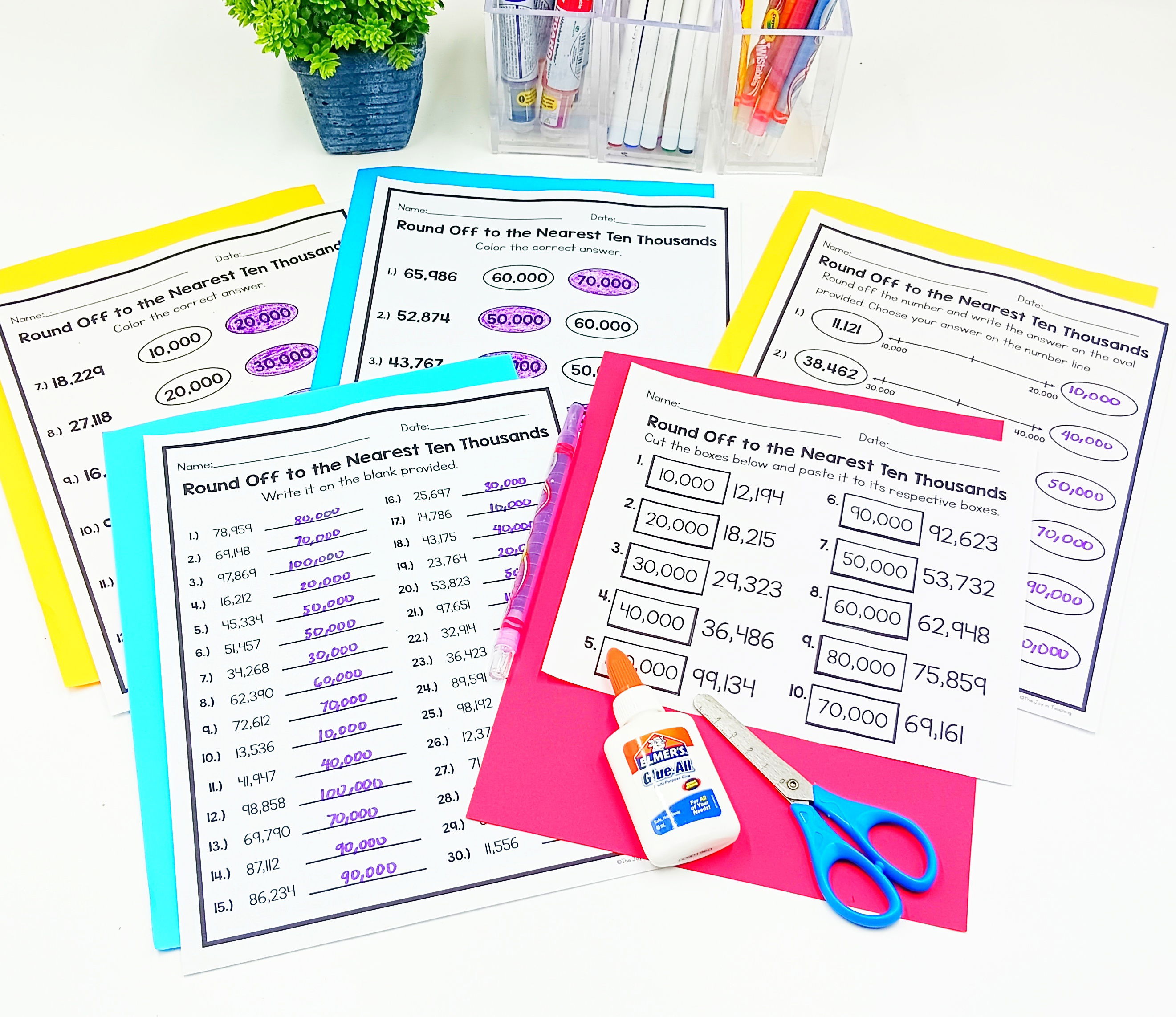
Hundred Thousand:
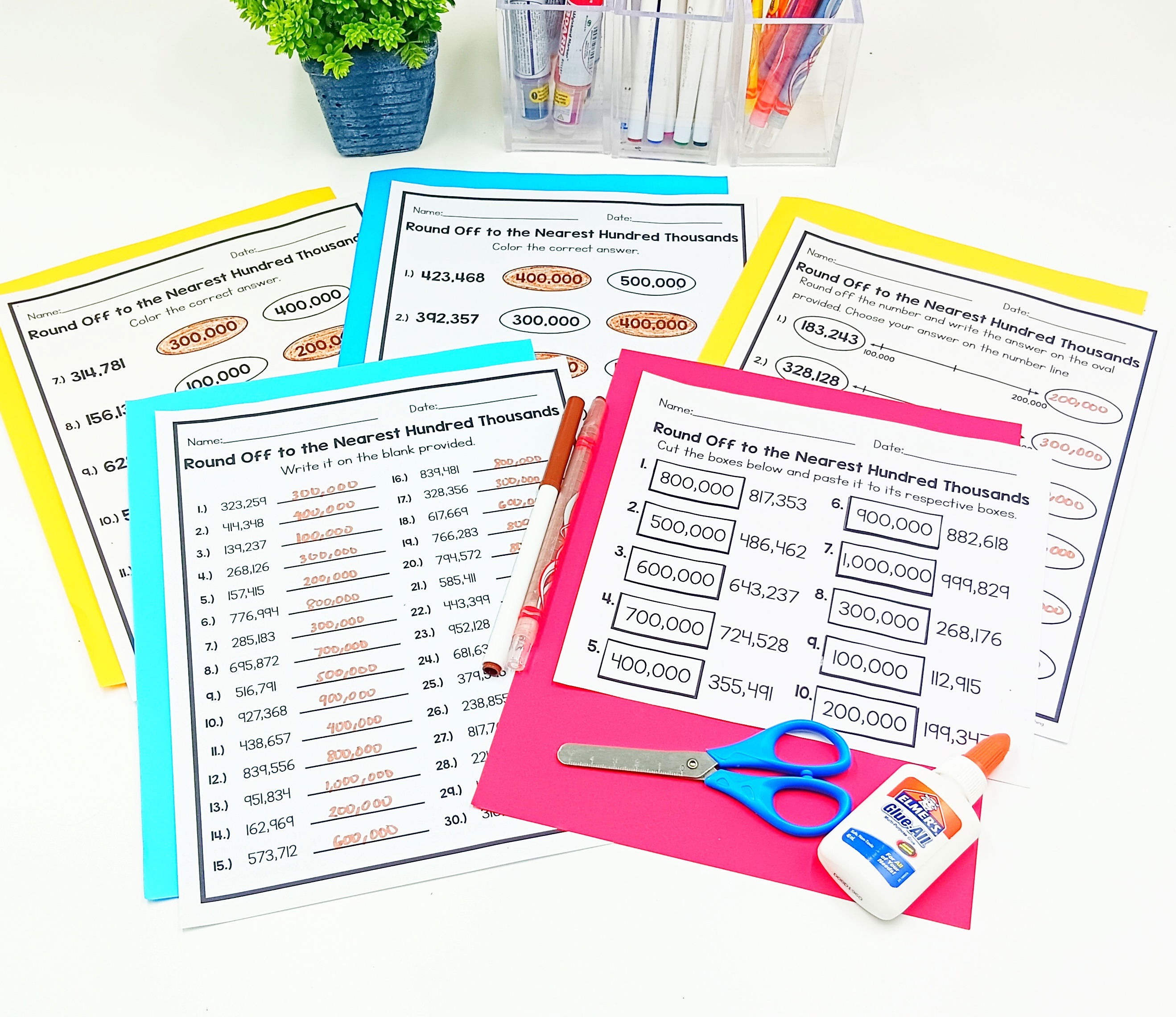
Millions
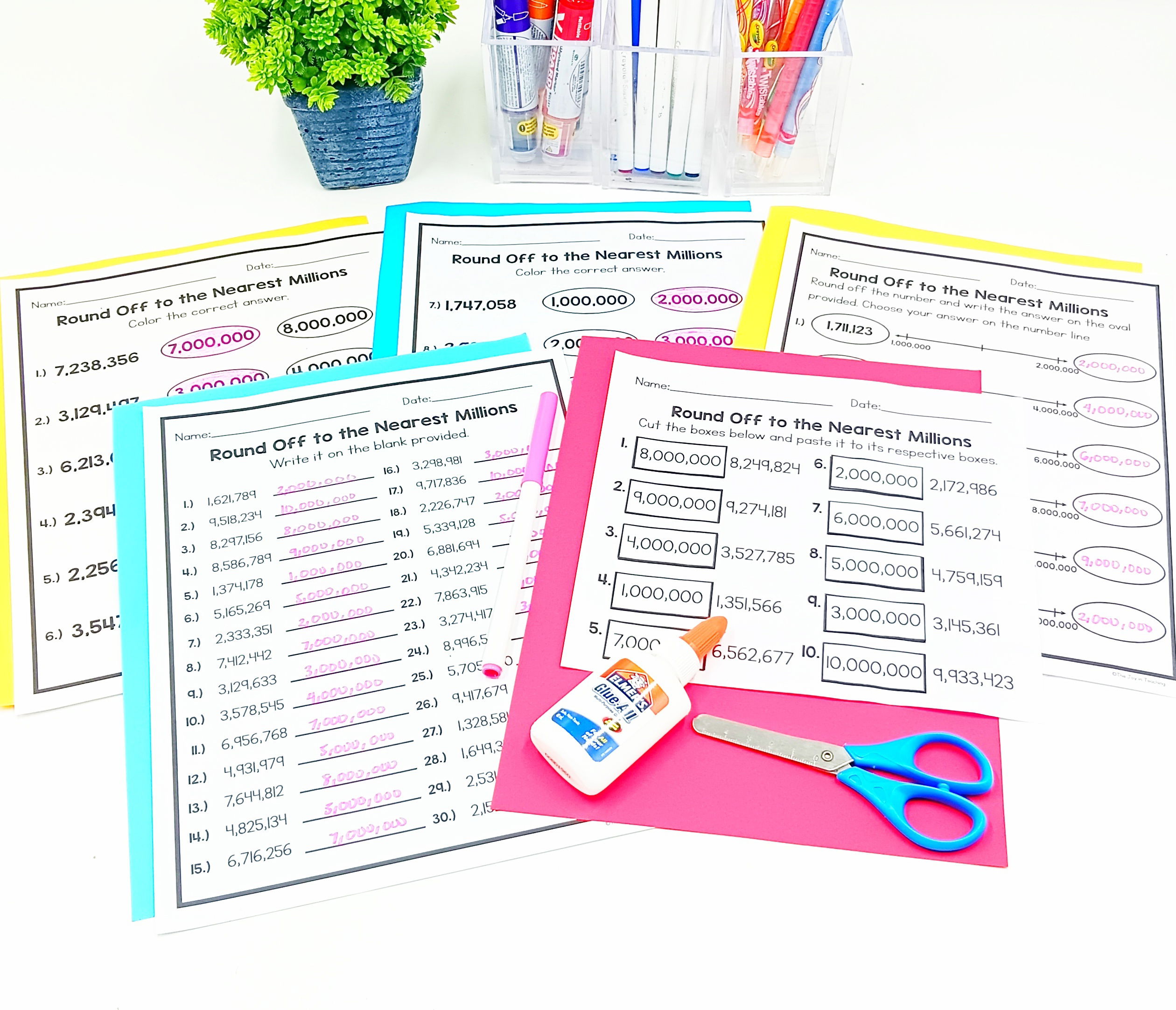
Summing it up with mixed worksheets and word problems:
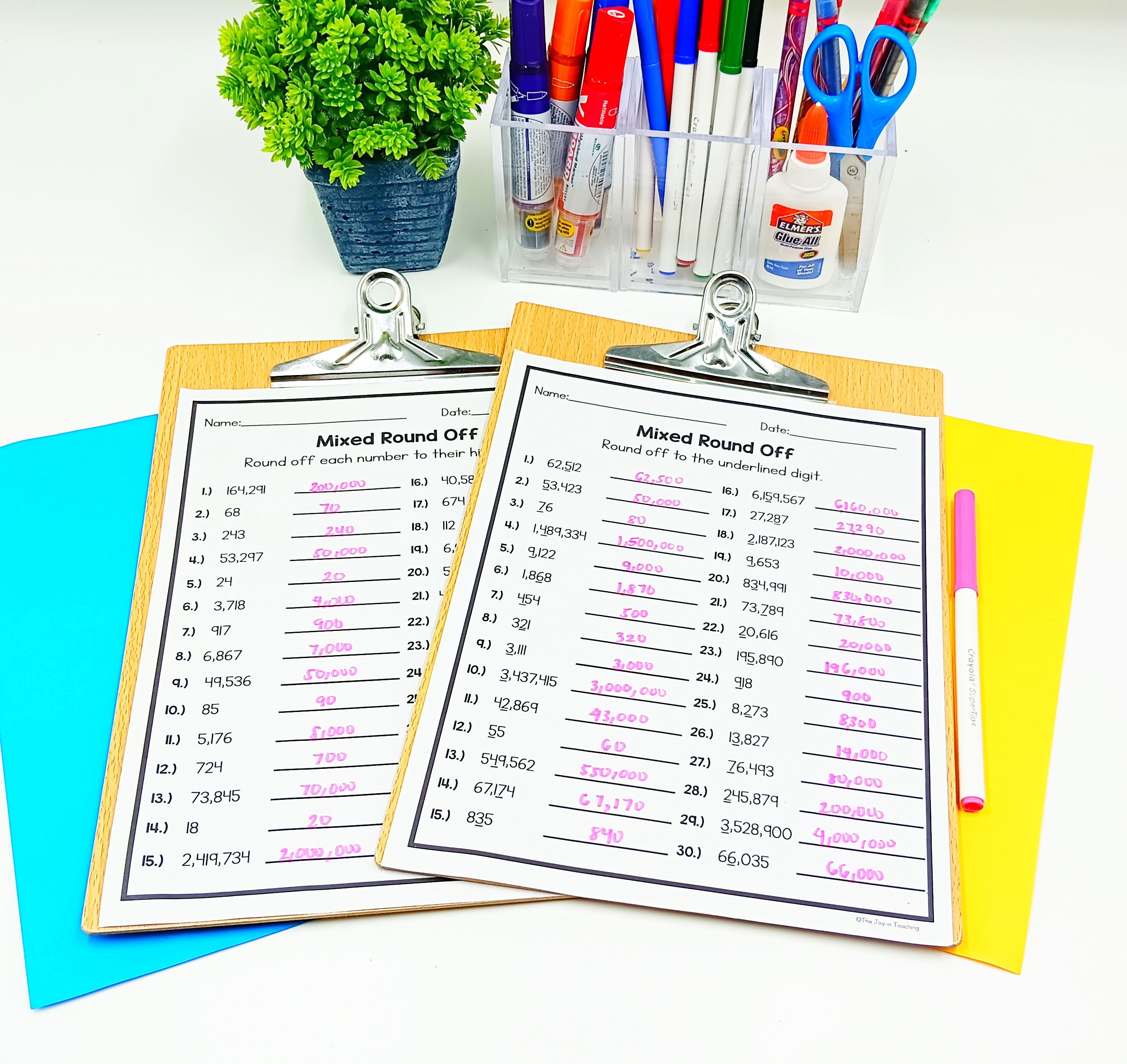

Instruction for the Activities:
1. Color It! Activity: Round Off to the Nearest Tens, Hundreds, Thousands, etc.
How to Play:
- Provide worksheets with numbers that need rounding off.
- Each number is associated with a color.
- Kids color the sections based on the rounded number.
Example: If rounding off to the nearest ten, color all numbers that round to 30 in blue, those that round to 40 in green, etc.
Tip: This is great for visual learners and adds an artistic element to math.
2. Cut and Paste Activity: Round Off to the Nearest Place Value
How to Play:
- Give kids worksheets with numbers and a set of rounded numbers to cut out.
- They need to match and paste the correct rounded number next to the original number.
Example: A number like 245 would have cutouts of 240 and 250, and the child pastes 250 next to it.
Tip: This activity helps with fine motor skills and makes math interactive.
3. Number Line Fun Activity: Use a Number Line to Round Off Numbers
How to Play:
- Complete the rounding worksheet by identifying the nearest rounding value for each number.
- For each number, circle whether it’s closer to the lower or higher rounding value (e.g., 40 or 50).
- Example: Round 47 to the nearest ten and write down if it’s closer to 40 or 50.
Tip: This is an excellent way for kids to visualize the rounding process.
4. Writing Practice Activity: Round Off Numbers and Write Them Down
How to Play:
- Provide worksheets where kids need to round off numbers and write the rounded number in a blank space.
Example: A worksheet might have “Round 356 to the nearest hundred: ______”.
Tip: This reinforces the concept and improves writing skills.
Adding Humor to Math Let’s face it, math can be dry sometimes. Adding a touch of humor can make all the difference. Share funny anecdotes or jokes related to rounding off numbers. For example:
- Joke: Why was six afraid of seven? Because seven eight (ate) nine! And if you round 789 to the nearest hundred, it’s still not very funny!
Or tell a story: “Once upon a time, there was a number named Forty-Five. Forty-Five wanted to join a club, but only numbers that ended in zero could join. So, Forty-Five asked its neighbor, Forty, how to get in. ‘Just get a little bigger, and you’ll be Fifty,’ said Forty. And so, Forty-Five rounded up and became Fifty, and they all lived happily ever after!”
Real-Life Experiences From the Teacher’s Desk As a teacher, I’ve seen firsthand how kids can struggle with abstract concepts like rounding. One day, I decided to turn the lesson into a game. I split the class into teams and gave them different numbers to round off. The team that got the most correct answers won a small prize. The excitement and competition made them forget they were learning something “difficult.” By the end of the lesson, they were all rounding pros!
From the Parent’s Perspective At home, teaching my child rounding off numbers turned into a cooking adventure. We used ingredients to round off measurements. For example, if a recipe called for 1.75 cups of flour, we’d round it to 2 cups for simplicity (and sometimes, a bit of mess!). This hands-on approach helped my child understand the practical application of rounding and made our kitchen time educational and fun.
Tips and Tricks for Teaching Rounding Off
1. Use Real-Life Scenarios Incorporate rounding off into daily activities. Whether you’re shopping and estimating costs or measuring ingredients while cooking, show how rounding makes life easier.

2. Interactive Games Create or find online games that involve rounding off numbers. Games are a great way to reinforce learning without it feeling like work.

3. Group Activities Kids learn well from each other. Group activities where they can discuss and solve rounding problems together can be very effective.

4. Consistent Practice Like any other skill, rounding off needs regular practice. Use a variety of worksheets and activities to keep the practice interesting and challenging.
Activities at Home and School At Home
1. Rounding Off Grocery Prices: Next time you’re at the store, ask your child to round off prices to the nearest dollar. This not only practices rounding but also helps with financial literacy.

2. Cooking and Baking: Use recipes to round off measurements. If a recipe needs 2.3 teaspoons of something, round it to 2 or 2.5 teaspoons.

3. Daily Journals: Have your child keep a journal where they round off numbers they encounter daily, like time, distances, or quantities.

At School
- Math Centers: Set up math centers with different rounding activities, like color-by-number, cut and paste, and number lines.
- Rounding Relay: Create a relay race where students need to solve rounding problems at different stations.
- Interactive Whiteboard: Use an interactive whiteboard to demonstrate rounding off numbers with digital manipulatives.
Conclusion Rounding off numbers doesn’t have to be a daunting task. With the right approach, it can be a fun and engaging part of learning math. By incorporating visual aids, hands-on activities, and a touch of humor, you can help your child or students grasp this essential skill with ease.
Follow Me for More Teaching Tips with Joy For more tips, resources, and a daily dose of teaching joy, follow me on:
Got questions or want to share your success stories? Drop me an email at thejoyinteaching@gmail.com. I love hearing from fellow educators and parents! Happy Teaching!
Joy Medalla
The Joy in Teaching 💛